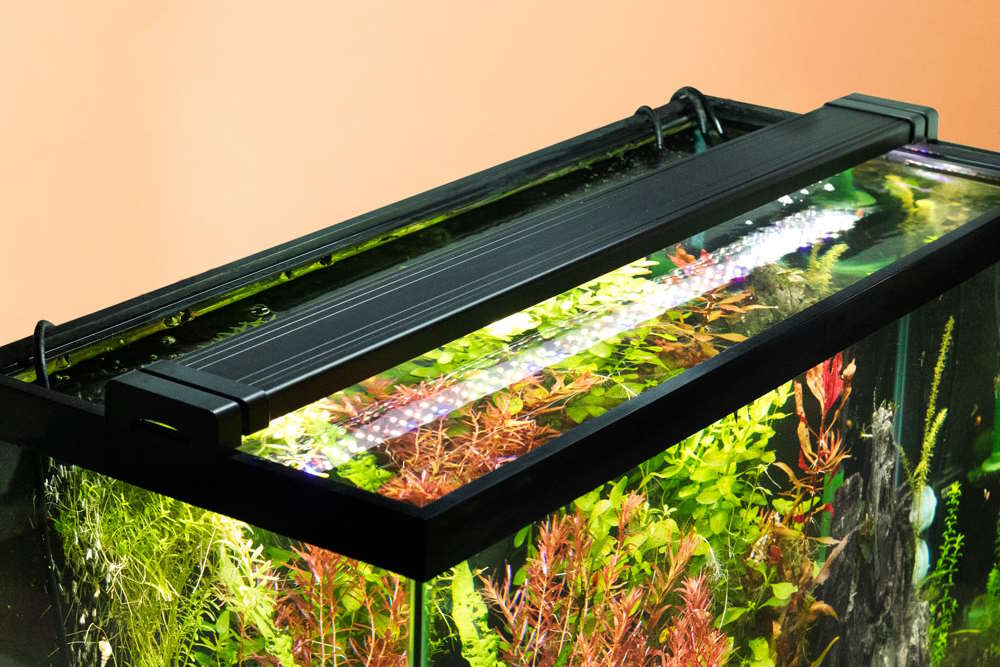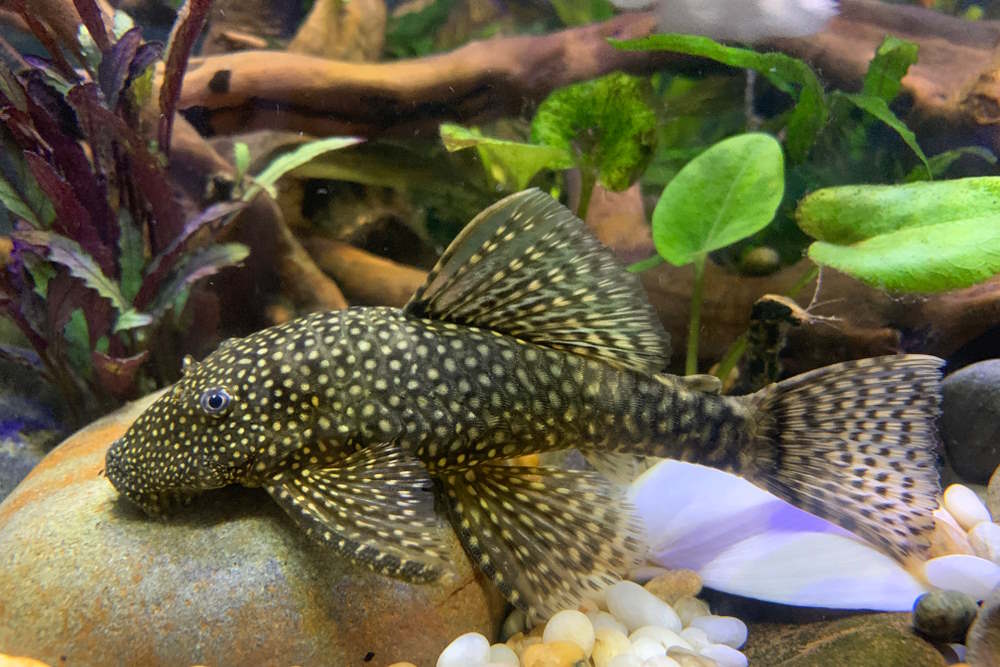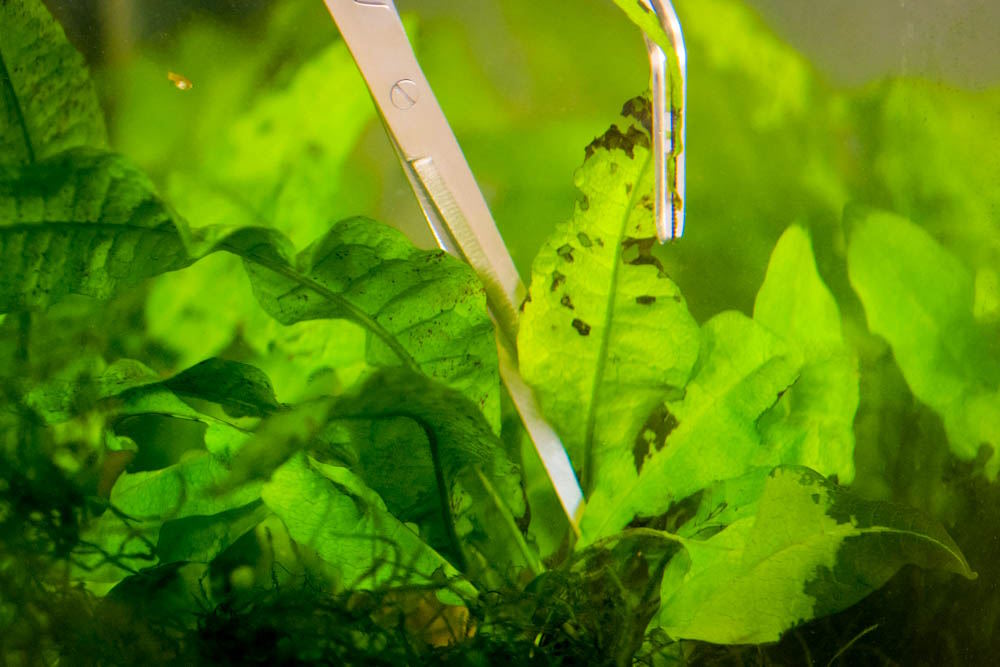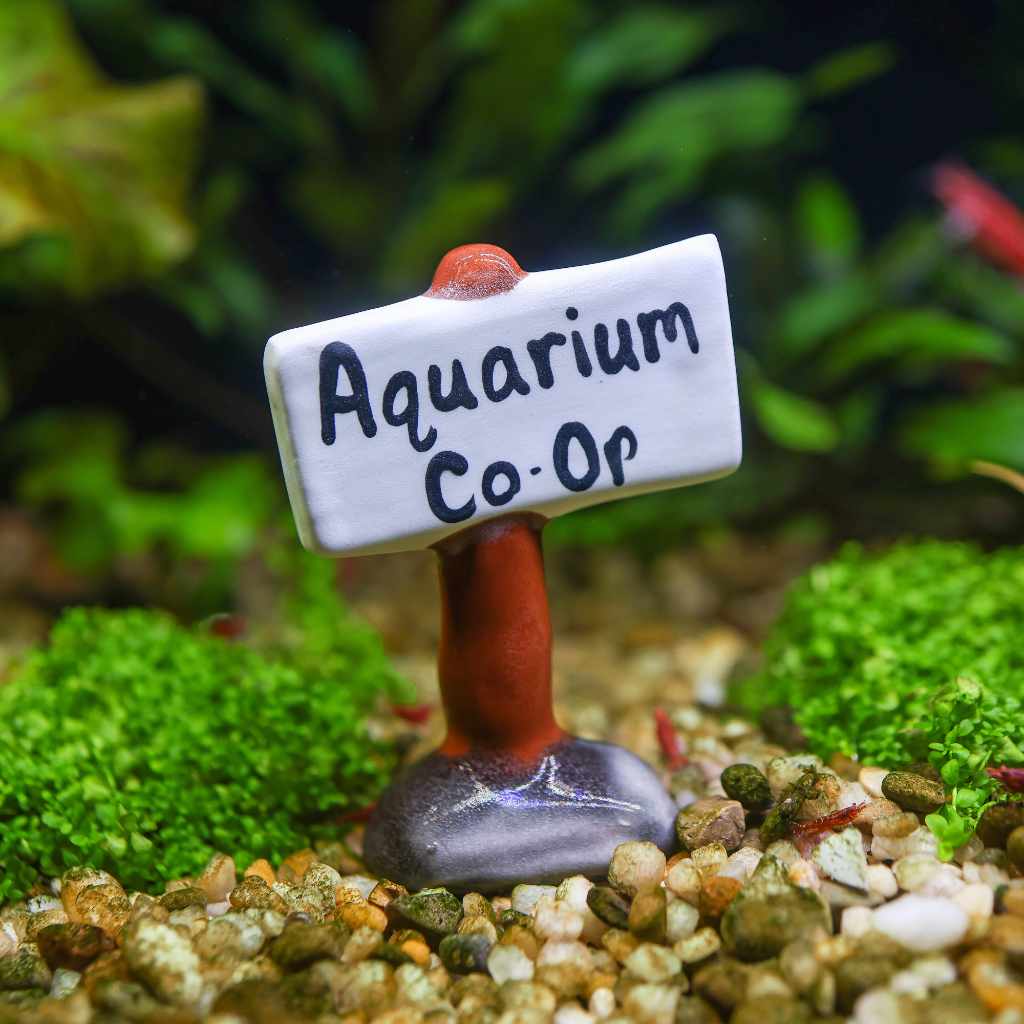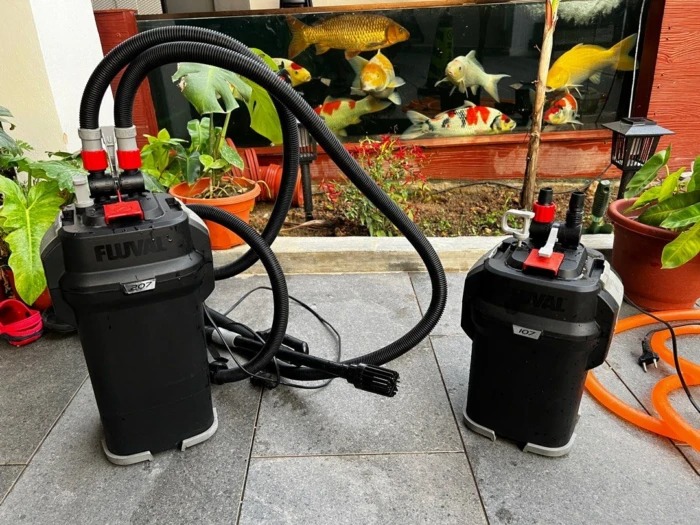Whether you have had a freshwater aquarium before or are entirely new to the aquarium hobby, this article will help you sort through all the options to determine what is needed for a saltwater fish tank?
Creating and maintaining a thriving, beautiful saltwater fish tank takes time, patience, money, and the right gear, gadgets, and supplies. Here is a quick summary of what is needed for a saltwater fish tank:
Equipment needed for a saltwater fish tank

- The aquarium itself
- A stand: capable of supporting the weight of the tank
- A lid: to help prevent fish from jumping
- Lights: set on a timer for 8-10 hours each day
- Heater and/or Chiller: for temperature control to warm up or cool down water as needed
- Water circulation pump: for water movement and oxygenation
- Filter: if the tank is not filled with live rock
- Gravel vacuum: for water changes and maintenance
- Hydrometer or Refractometer: for testing salinity/specific gravity
- Buckets: for water changes and acclimating new fish and invertebrates
- Plastic containers: for catching, transporting, or acclimating fish and inverts
- Thermometer: for measuring temperature

Substrate and decorations needed for a saltwater fish tank
- Live rock: Porous reef rock to create some reef aquascape, provide hiding spots and places to mount corals
- Live sand: Helps jump-start the biological diversity in the tank and makes the bottom of the tank look nice
- Decorations: To personalize your tank and give it the look you want
Supplies needed for a saltwater fish tank
- Reef salt mix: for making salt water, you’ll need a lot of this, and it’s heavy
- Test kits: for testing critical water parameters
- Coral dip: for treating corals before adding them to the fish tank
- Kalkwasser or a Two-Part supplement: for Calcium management
- Replacement filter media: if using a filter

Food needed for a saltwater fish tank
You don’t need to buy all of these all at once, but over time, it is generally good to provide a variety of options.
- Live foods: Blackworms, Brine shrimp, Mysis shrimp, Feeder shrimp, depending on what animals you are feeding
- Frozen foods: In your pet store freezer–brine shrimp, mysis shrimp, veggie blends
- Pellets or Flakes: These nutrient-packed prepared foods help make feeding time convenient
There are a lot more items that will be covered in this article that you could add, but the list above is what is needed for a saltwater fish tank.

Additional equipment that can be helpful for a saltwater fish tank
In addition to what is needed for a saltwater fish tank, there are a lot of optional items that are not 100% necessary but can improve your experience. Here are a bunch of the most popular and useful items to consider supplementing with what is needed for a saltwater fish tank.
- Protein skimmer: specialized equipment that cleans saltwater; not 100% necessary but helps significantly.
- Sump: a reservoir below the tank, usually in the stand, that houses additional water and keeps the equipment out of view
- Refugium: a dedicated area where natural algae and invertebrates grow and purify the water
- Target feeder for corals: specialized gear to help feed corals
- Magnet glass cleaner: makes keeping the aquarium glass clear of algae easy
- Nets: for chasing or catching fish
- Quarantine tank: for observing fish before adding to your tank and treating parasites
- RO/DI: A water purification system to turn your tap water into the best possible reef water
- Reactors: equipment that holds media that reacts with chemicals in the water, removing them
- Dosers: small pumps that add nutrients/supplements consistently
- Automatic Top Off: Automatic pump system that replaces evaporation
- Reef Journal: A place to plan out your fish tank, record your progress and test results
- New Saltwater Aquarium Guide: A guide to setting up your new tank
Water quality: testing what is needed for a saltwater fish tank
Maintaining high water quality is everything in a saltwater tank. In some respects, success is as much about caring for the water as it is about caring for the fish in the fish tank.

Here are the most important water quality measurements to do what is needed for a saltwater fish tank:
- Salinity: how much salt is in the water, typically measured as specific gravity with a hydrometer
- pH: saltwater needs to have a higher pH than freshwater
- Temperature: saltwater fish come from warm, tropical reef waters
- Ammonia: a poisonous pollutant that needs to be filtered out
- Nitrites: an intermediate compound created when your filter processes ammonia
- Nitrates: the chemical compound created when ammonia is converted in your filter. This waste product is less toxic than ammonia but needs to be managed in a saltwater fish tank.
- Alkalinity: used to estimate healthy levels of an essential compound to corals called bicarbonate
- Calcium: a critical element for healthy corals
- Phosphates: a trace nutrient that becomes problematic in large quantities
To test for and measure these water parameters, you will need equipment, including a hydrometer and thermometer, for measuring salinity and temperature.
You will also need test kits or strips for measuring ammonia, nitrites, nitrates, alkalinity, calcium, and phosphates.
Check out this full-length article on the most important water parameters for more information.
Dealing with potential problems
We all face problems while trying to keep our saltwater fish tanks pristine and clean. The three most likely problems you will encounter are:
- Nuisance algae: problematic for almost every new tank and periodically even once the tank is established. The biggest algae problems are dinoflagellates, diatoms, cyanobacteria, hair algae, bryopsis, and bubble algae.
- Parasites: saltwater ich, marine velvet, and other parasites weaken fish and spread in our tanks if we don’t correctly quarantine
- Unwanted hitchhikers: aiptasia anemones, bristle worms, red bugs, and other creatures travel into our tanks on rocks and corals and can plague our inhabitants.

Related article: 23 Quick Tips for Dealing with Aquarium Algae
Related article: Treating saltwater ich
Related article: Hitchhiker’s guide to live rock
What is needed for a saltwater fish tank: the best first fish
The best first fish for a new saltwater tank will be relatively inexpensive, hardy, and proven by many people to be successful in an aquarium. Specific care guides and lists of the best first fish are their own topics, but to get you started, here are three of the best first fish:
- Clownfish: 94% of aquarium enthusiasts reported success caring for clownfish
- Wrasses: 89% reported success caring for wrasses
- Cardinalfish: 88% reported success caring for wrasses
Related article: Powerful coral care and saltwater fish statistics
Related article: 5 Best saltwater fish for beginners

How many fish for a saltwater fish tank, and what are the best combinations?
The number of fish for a saltwater fish tank will vary based on the size of the tank, the size of the fish, the combination of fish, and the amount of space each one needs. To review custom recommendations, check out these popular stocking guides by tank size:
When to add the first saltwater fish
The first appropriate time to add your first saltwater fish is after the tank has completely cycled. Let’s explore what that means. A fish tank, by definition, is a reservoir of water you keep in your house and ideally doesn’t leak. That means nothing goes in or leaves the tank without you handling the details.
The saltwater fish and invertebrates you add will go about their business and do their own biological functions if you catch my meaning.
You will also add food that won’t get entirely eaten. All of that stuff eventually creates waste. One of the key waste products that will build up (at first) is ammonia. Unfortunately, ammonia is a toxic chemical.
Fortunately, naturally occurring bacteria will colonize your tank, all on their own, or with the help of additives or special products you can buy, like live rock and live sand. Those first, naturally occurring and beneficial bacterial will consume the ammonia and turn it into nitrites (spelling is important there, as you’ll see in a moment).

Those nitrites are problematic in freshwater but not-so-problematic in saltwater. However, either way, we are fortunate that there is another group of bacteria that like to consume the nitrites and leave nitrates behind as a waste product.
Once your tank has built up the natural colonies of bacteria that you need to do all that waste management, your tank is said to have cycled.
That means the tank has been up and running, and you don’t detect any ammonia or nitrites with test kits or test strips, even with waste products (decaying food or ammonia additives) inside the aquarium water, because the bacteria are efficiently converting it via that multi-step process into nitrates.
If you add your first fish before that is done, you will burn them. Chemical burns. Nobody wants to see you create the next Joker (Batman reference) in your tank.

So please check to see that your saltwater fish tank has cycled before adding your first saltwater fish to the tank.
Related: How to cycle a saltwater fish tank
What is needed for a saltwater fish tank: the best beginner corals
If you plan to add corals to your saltwater fish tank, an important first step is to pick those coral types that you are likely to have success with. Success breeds more success in this hobby. Here are a few of the best beginner corals to add to a new saltwater fish tank:
- Mushroom corals: 92% of people reported success with mushroom corals
- Green star polyps: success was reported 85% of the time with GSP
- Toadstool corals: 82% of people were successful with toadstool corals
Related article: 27 Best beginner corals
When to add your first corals
Determining when to add your first corals is a bit of a tricky topic. Some of the best beginner corals will act like pioneers, helping you colonize the new frontier you have created and help carve out a space and compete with the inevitable algae problem.

However, those first corals are also likely to succumb to the fluctuating water parameters and the problems that those nuisance algae will cause.
You certainly could start sooner if you were very eager to get your hands wet with corals, but I think a reasonable starting point estimate would be to wait until your tank has progressed through the various algae stages.
While not every tank will experience all the stages, the first ‘algae’ to pop up are brown dinoflagellates, diatoms, cyanobacteria, hair and bubble algae, and then finally coralline algae and stability.
Once those problem algae are out of the way and the coralline algae take over (should be between 6 months and a year), your tank is in the best shape it is going to be to give you the greatest chance of success with corals.
In all fairness, that might also be doing it the hard way, so if you want to get started a little early, start with that list above of the hardiest beginner corals because they are fast enough to potentially out-compete those problem algae.
Best cleanup crew: what is needed for a saltwater fish tank
One of the coolest things needed for a saltwater fish tank is also one of the most fun–it is called a clean-up crew. What is a clean-up crew? It is a combination of invertebrates that will help stir up the sand, eat unwanted or leftover food, munch on algae and help remove the unwanted things.
Here are a few of the best cleanup crew members:
- Hermit crabs: able to climb to the hardest-to-reach places, they are great scavengers
- Cerith snails: MVP of the clean-up crew. They are small but tackle the tough problems
- Emerald crabs: Make short work of hair algae problems
Related: 23 Interesting invertebrates that also eat algae
Maintenance tasks: what is needed for a saltwater fish tank?
Each day
- Feed your fish 2-3 times
- Wipe down aquarium glass to clean off algal film
- Dump the protein skimmer cup to remove the skimmate
Each week
- Perform a 10-20% water change (at least until you get the hang of it). You want to suck up as much muck, gunk, algae, and detritus as you can, during your change. Extra credit for having a gross bucket of water
- Test your water 2-3 times each with all the kits or strips you own, targeting the major water parameters, and record it in your Reef Journal.
- With a wet rag (fresh water, no chemicals,) wipe away any accumulated salt deposits on the lid (called salt creep, it will keep growing if you don’t get rid of it).
- Replace any water you lost to evaporation with aged, chlorine-free fresh water (RO/DI is best, but aged tap water is fine). Keep track of how much skimmate you’ve removed because you want to keep salinity neutral, and the skimmate removed will be saltwater, not freshwater
- Clean out the protein skimmer cup and neck to aid in efficient skimming
- Feed your corals 1-2 times
Cost and how much money: what is needed for a saltwater fish tank
You can truly spend however much money you want on a saltwater tank, and you will probably spend more money than you think. In a 2022 survey of Saltwater Aquarium Enthusiasts, 18% spent $500 or less on their setups, but the median cost was between $1,000- $1,500.

As you can see from the chart above, however, the initial setup cost was spread throughout the range. In addition, there was a sizeable number of people at every cost threshold, suggesting that the upfront investment cost is somewhat up to the aquarium owner to decide.
Best advice and tips: what is needed for saltwater fish tank success
- Install a grounding probe: to avoid shocking yourself
- Nets: better used to chase fish into a clear container than the other way around
- Save money: by mixing less expensive dry rock with live rock–it all becomes live rock, eventually
Related: Best saltwater aquarium tips for beginners
Quarantine
When I had freshwater tanks, I never quarantined them. I also never worried about it. Sure, diseases and parasites showed up, but I just ran out to the store, bought some meds, turned my tank blue or green for a few days, and the problem was over.

I’m sure I also suffered my share of losses, but freshwater fish are cheap. I don’t mean to be callous. Just saying I never gave it much attention.
When I converted to the saltwater aquarium hobby all those years ago, I brought those bad habits with me, arrogantly reinforced by my self-perceptions of freshwater success.
I’m here to report that things ended badly for me twice. I’m talking total tank crashes due to crazy parasite problems. You can’t treat parasite problems effectively in a reef tank because anything you would use (that works!) will kill your invertebrates and corals.
The only way to treat parasites is in isolation. It is tough to get fish out of a reef tank, and it is challenging to eradicate parasites once they get in your reef tank. The solution to these problems is quarantine. Please read up on it.
Related: How to quarantine for a saltwater tank
What is needed for a saltwater fish tank that is different from freshwater?
There are a lot of similarities between keeping a freshwater tank and a saltwater fish tank, but there are also a few unique elements needed for a saltwater fish tank.
Similarities with freshwater
The fundamentals of managing a saltwater fish tank are essentially the same as with freshwater–you need to understand the care needs of the fish you want to keep, and you need to meet them while also maintaining stable, pristine water conditions in the tank.
- A biological filter converts waste ammonia into nitrates.
- Water pumps help oxygenate and circulate the water
- Heaters warm up the water to tropical temperatures
- Water changes and maintenance keep things stable.
A saltwater fish tank with corals is more like managing a planted freshwater tank and/or delicate fish like discus.
What is needed for a saltwater fish tank that is different from freshwater
Corals are not plants and not exactly traditional ‘animals’, per se, but they have care needs similar to both. That means they need high-quality lighting, like plants, but also need to be fed, like animals, and adequate water flow is essential to helping them get enough oxygen and remove their waste.

Many fish and invertebrates are more sensitive to fluctuations in water quality than the freshwater hobby.
Building and maintaining a saltwater tank is much more expensive.
Parasites, diseases and pests can be catastrophic and cause much more damage in saltwater (which is also much more expensive).
Biological filtration is vital in both fresh and saltwater, but in saltwater fish tanks, special rocks called live rocks, are placed inside the tank and serve as the reservoir for the bacteria that help clean the water. That is very different from a freshwater tank, where those bacteria are generally housed on a biowheel or in the sponge inside the filter.
This may have seemed obvious; salt water is needed for a saltwater fish tank. But, that isn’t made with table salt, or even the small box of ‘aquarium salt’ on the shelf at your big box store. Saltwater is made from a blend of salts and nutrients to recreate the specific levels of major and trace elements as ocean reefs.
Related: How to make saltwater for a saltwater fish tank
Related: Converting from freshwater to saltwater
Is it better to have a small tank or a larger tank?
Many people in the echo chamber reiterate some old standby advice that bigger is better in the saltwater aquarium hobby, but that is not always the case.
Bigger almost always means more expense, and it also almost always means more work- unless you have additional equipment to help make the work more manageable. At that point, you need to see my first point, which means that it means more expense.
Bigger tanks also weigh a lot more, which can often limit your options of where you can keep the tank or even require you to structurally reinforce your floor.
Here’s what my crawl space looks like:

What was that point I was making? Oh, right, bigger is NOT always better.
Smaller can be less expensive and easier to manage. Chores will take a fraction of the time, and you’ll run out of space sooner, which means it will cost you less. In addition, you will need less and smaller equipment, so running costs will also be lower.
With that said, people say bigger is better because water is generally pretty good at staying stable, unless we make it up, and a lot of water is better at staying stable than a little bit of water. So, since stability is a big part of the game here, size has THAT advantage.
But contrary to the norms here, it makes a lot of sense to start out relatively small. You can get a sense of how easy or hard it is to manage a saltwater fish tank without spending a fortune.
You also eliminate the risk that your new hobby feels more like a part-time job that you have to pay for.
You could start with any size tank you want, but for me, the sweet spot is between 20 gallons and 75 gallons.
Styles of saltwater fish tanks
What is needed for a saltwater fish tank will vary a bit based on what style of aquarium setup you want to have. However, here are a few ideas to get you started.

Fish Only
A fish-only saltwater tank is the easiest type of aquarium to set up and is the most like a freshwater fish-only aquarium. You need good filtration, enough aquascape, and decorations to make your tank look great and make your fish feel safe, but it is as simple as you can get.
Having a fish-only tank does allow you to keep certain species that might otherwise be problematic in combination with certain species.
For example, you could create a community of aggressive saltwater fish species that would not be appropriate for a community tank. However, many large, aggressive fish are also some of the easiest to care for (as long as you keep them separate from their prey).
You could also potentially keep some of the more delicate non-reef-safe fish, like large angelfish or butterflyfish. But keep in mind that would be a high complexity/difficulty tank.

Fish Only With Live Rock (FOWLR)
A FOWLR tank is a Fish Only With Live Rock tank. The name says (most of) it all. You have fish and live rock to create a natural substrate and performing the biological filtration for the tank, but you don’t have corals.
This is often the gateway tank that people start with. Once success has been reached with saltwater fish, people often want to create a mixed reef–and if you start out with a live rock aquascape, the ‘bones’ of the tank will already be there for you to put your corals on when, and if the time presents.
There aren’t any advantages between FOWLR vs. FO other than ease of upgrade and a more natural look/feel.
Community Reef Tank
Many of us dream of that community reef tank–re-creating the coral reefs we see when we snorkel, scuba dive, or watch TV programs. Seeing fish and corals living harmoniously, beautiful colors flashing and swaying in the current.

This type of fish tank requires careful planning, special equipment (detailed above), and patience, but it is a very achievable goal.
Conclusions
Hopefully, you have enjoyed reading this article about what is needed for a saltwater aquarium. There are plenty of links in each section to dive deeper and learn about specific topics. If you have questions not answered here or there, please drop a comment below or join the newsletter to send me an email.
I look forward to connecting with you.

